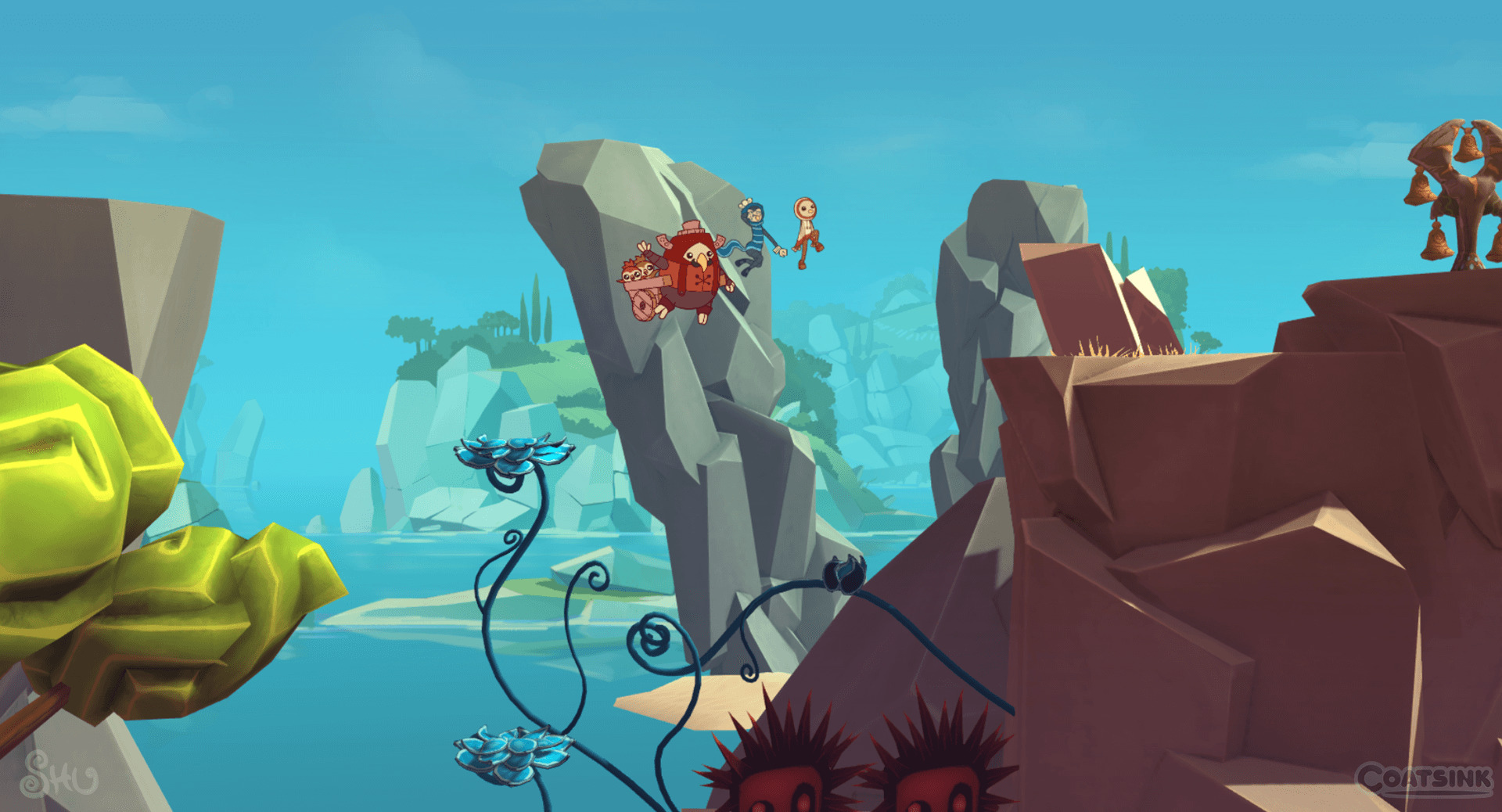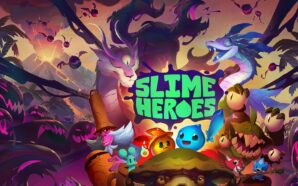Shu is a 2.5D sidescrolling platformer not too dissimilar from the original Sonic games. With an emphasis on speed you play as Shu, a member of a species of bird people, who must race across 5 different locales before an ensuing destructive storm can catch up. Shu isn’t just about getting from point A to B as quickly as possible though, as each chapter has plenty of collectables. The easiest and most obvious things to pick up on your sprint are the butterflies. They mostly act as a sort of compass leading you in the right direction, so if you’re ever in doubt on where to go try following the butterflies. There are 6 ‘babbies’ hidden in each stage and they’re irresistible to rescue – they look like multicoloured Torchics in half-shells, squeaking loudly to be saved. There are also stone tablets to discover. Once you find every tablet hidden in each chapter you unlock a tapestry detailing the myth of the Birdfolk and the Storm. If you finish a chapter without dying, with all 6 babbies and tablets in your possession you are rewarded with a gold Diva medal. Once a chapter is complete you can always return to try and beat the Shadow Shu’s run-time (so time trial mode, basically).
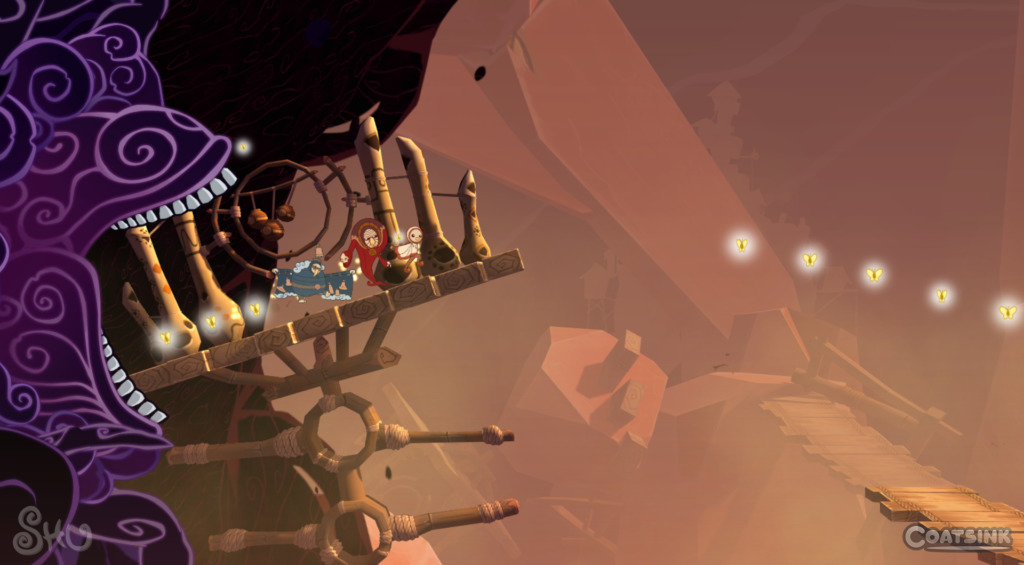
If the Storm catches up with you it will eat you, and that’s not a subtle description – the Storm has a horrifying face and a set of gnashers. It’s a beautiful analogy and an excellent use of projecting a personality onto an otherwise characterless entity. Besides the brutal Storm (which is without a doubt your biggest problem) Shu doesn’t have any other aggressive enemies. All the other opponents come in the forms of obstacles, pitfalls and deadly obstructions. The first level has you avoiding bottomless holes and water but the list of environmental hazards rapidly escalates, pitting you against spiky thickets, tumbling knight statues and collapsing glass podiums. You have to learn through death as new environmental challenges aren’t always obvious. For example, lightning will kill you – of course, you don’t find that out until you’re struck by it. Other times it’s not clear whether a platform is approachable or if it’s an asset of the pretty background – again, you don’t know until you attempt landing on it (and inevitably falling through it).
Along the way Shu will meet other bird people and each one has their own unique abilities that will aid you in overcoming the variety of obstacles in your way. Shu can glide, which is great for covering long distances, but Joro can break through wooden planks and Lati can control blooming flowers. You won’t make it through a chapter without mastering the skills of the friends you make along the way, and you’ll be meeting a lot more than Joro and Lati. One of them can even slow down time!
Shu’s plot is a slave to the gameplay, and that’s how every videogame narrative should be.
There are no elaborate cut scenes; just cute, dialogue-less animations that give context to your actions. In the opening cinematic a civilisation of Birdfolk are caught in a chaotic storm. The village elder sings an ancient song that briefly paralyses the Storm, giving Shu time to escape. Unfortunately Shu’s home and the village elder do not survive, and so you must race to the top of the mountain with the Storm hot on your tail feathers. And although only 5 levels deep, Shu‘s short story is actually quite captivating.
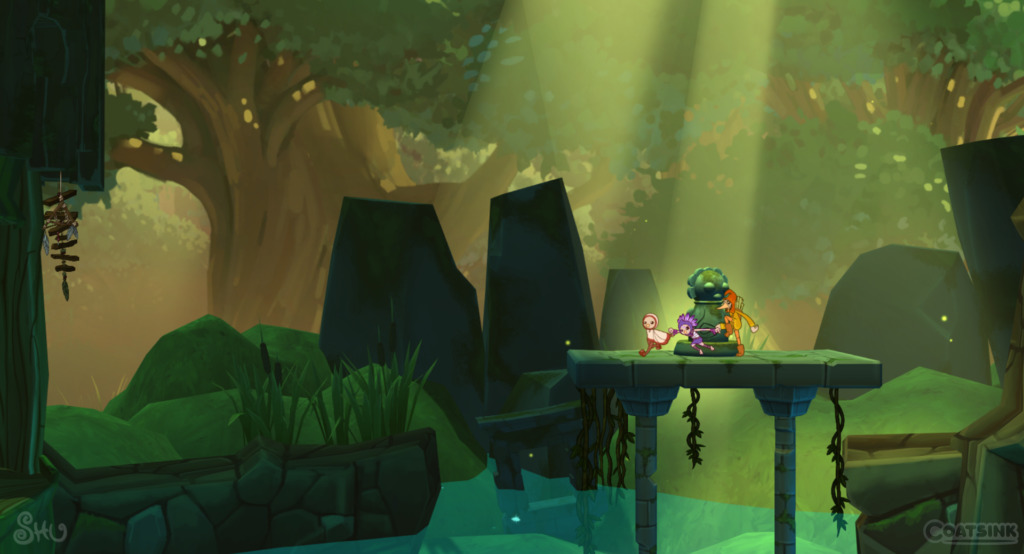
Shu trips up in its level design. It begs you to go fast but it constantly pulls at your leash. It’s evident that Coatsink and Secret Lunch wanted to create an experience with speed and timing in mind but it never quite comes to fruition as any momentum you build up is quickly stripped away by an obtrusive step protruding out of the ground. There should be a rhythm to each mission but it’s impossible to find because of how often the game asks you to adjust your speed, or how frequently it forces you to course-correct. The numerous checkpoints also implies that Coatsink know they have made it too difficult. You’ll be grateful they’re there because without them you would never complete the later stages. It’s comforting to know that there’s another checkpoint beyond the current string of obstacles but it does nothing to encourage the player to get good at the game.
It would have been great if the Run sequences could be replayed. These are the most frustrating and the most tantalising segments. You hate and love them in equal measure. They require many playthroughs to perfect but in order to reach a Run sequence you need to replay an entire chapter, and that’s a shame because running away from the Storm would be a lot more enjoyable if you didn’t have the burden of playing hop scotch for 5 minutes beforehand.
I encountered a couple of glitches, or what I assumed were glitches. During one chapter Shu and his tag team got caught on the edge of a floating platform, and all I could do was wait for the Storm to swallow me whole. I was also frequently agitated when Shu wouldn’t respond to my button prompts. I hate to blame the developers for my incompetence, but the game felt unresponsive at times. I can recall multiple times where Shu’s feet were on solid ground but my attempts to jump were exchanged with a slide off the edge instead – it’s annoying because sometimes Shu requires you to jump at the last moment, and when you’re hammering at the X button and nothing happens… Well let’s just say that’s how TVs get broken.
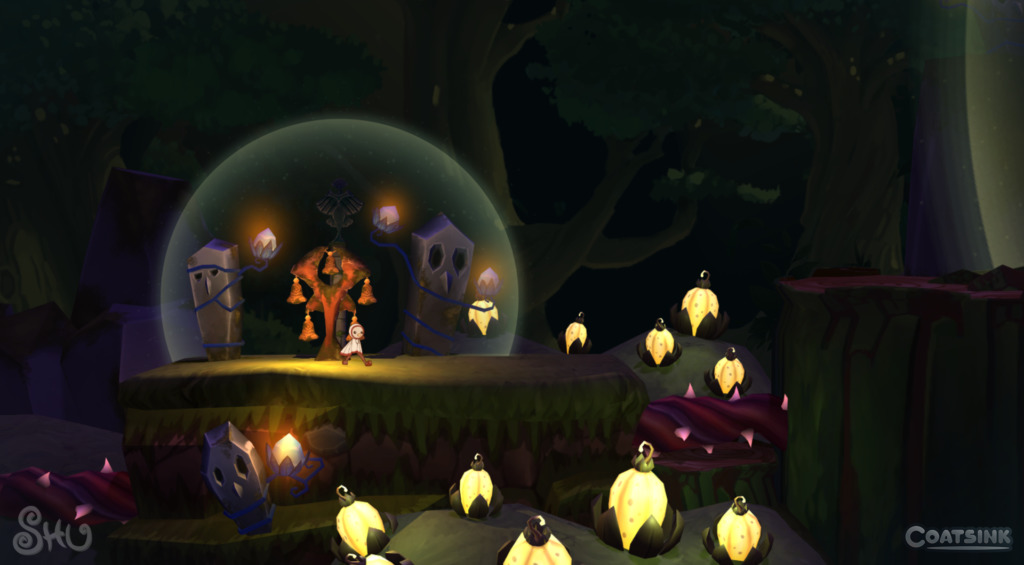
Shu is a fun, quick platformer that will test your patience but will always draw you back in for a second (third, fourth, thousandth) attempt. Finding all the butterflies, tablets and babbies gives each chapter a well-deserved breath of fresh air. And even though I didn’t touch upon the audio design, the soundtrack is inviting and helps amplify the experience. Shu’s time trial mode makes it the perfect sofa co-op party game. Next time you have your friends over boot up Shu and try to beat each other’s times – you’ll be playing for hours.
You can buy Shu now for PlayStation 4 and on Steam.
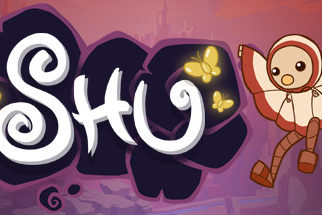
- Cute visuals
- Imaginative platforming
- Unresponsive at times
- Momentum is easy to lose
- Visuals8
- Atmosphere7
- Story7
- Soundtrack8
- Gameplay7




